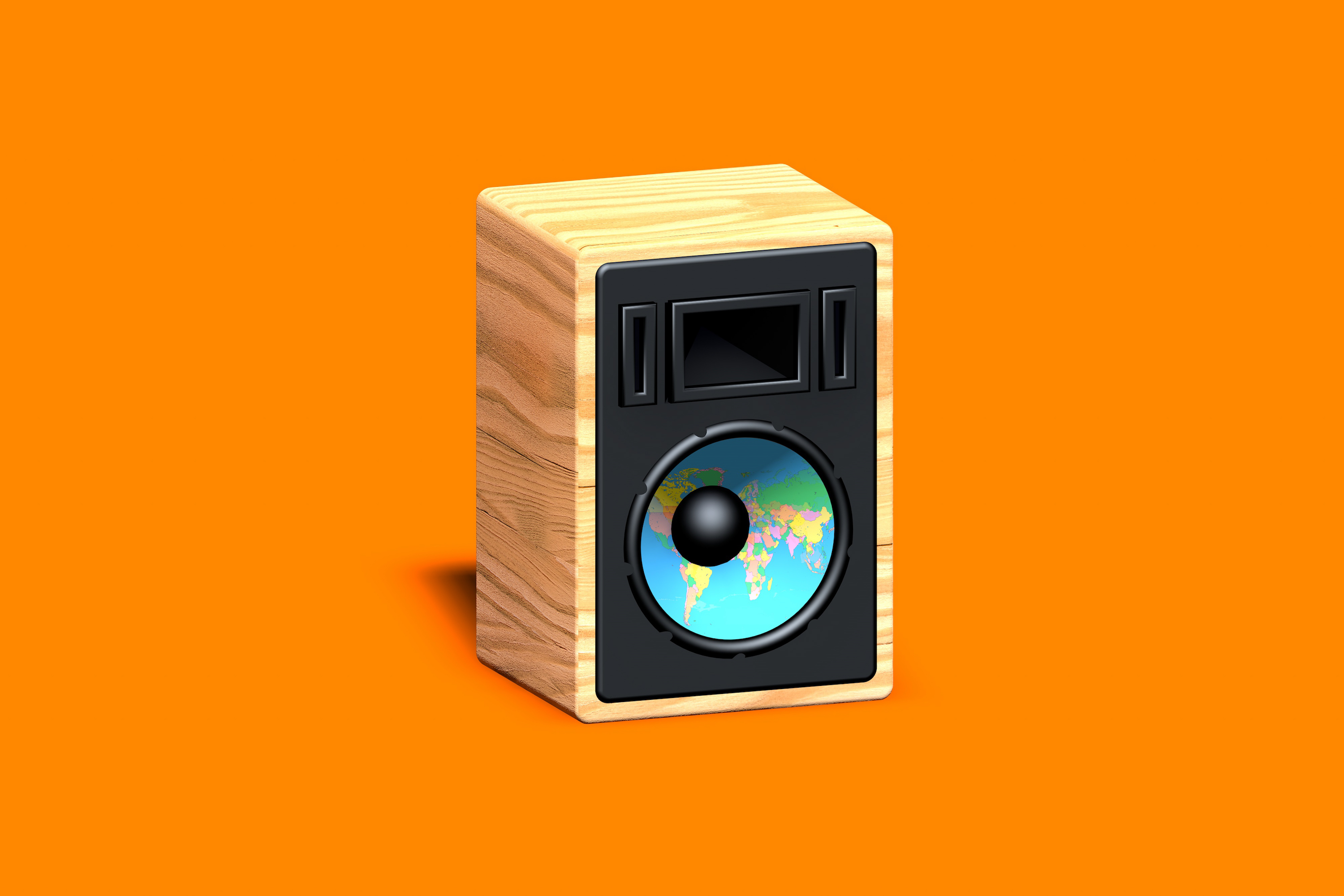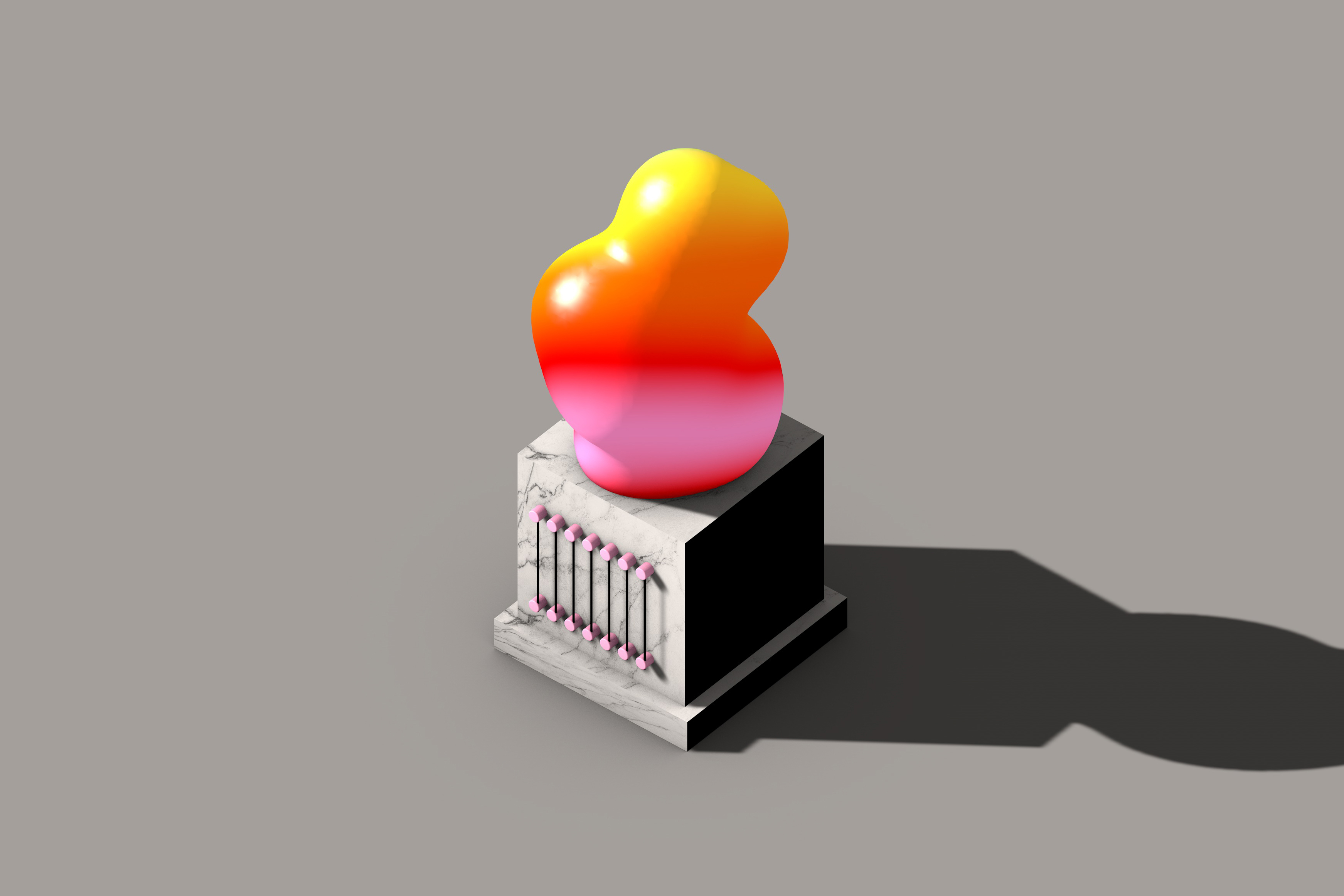Sounds and Pressure: The Enduring Power of Jamaican Street Art
Take a walk through Kingston with the unsung heroes of the city’s mural art
“Yuh okay? Yuh good?” This is the third time I am being asked. In this case, “good” really means, “not lost, right?” It’s the middle of the afternoon and I am standing in front of a hardware store on the corner of Maxfield Avenue and Spanish Town Road at the bottom of Kingston, Jamaica, right next to the ruins of the once beautiful Majestic Theater. By “standing,” I should maybe add, “standing out,” as few tourists ever venture to this verge of Greenwich Town, a community once called “ghetto” and made famous by its fishermen and sufferer style singers and producers – Freedom Sounds, Rod Taylor, Prince Alla and Sammy Dread to name a few. Some say it’s dangerous if you don’t belong. Perhaps, but on my many travels to Jamaica, I’ve come to know that the deeper you venture into the capital’s underbelly, the more locals will make sure that nothing happens to you. So yes, thanks, I’m good.
Five more minutes and a lanky character, nonchalantly sporting the mandatory and distinctive fresh white towel on his right shoulder, appears on the street corner. 44-year-old “Bones” Williams is one of Kingston’s best mural artists. He’s known to sign his pieces with a stylized tibia bone scratching its head, in honor of the nickname that his lengthy figure earned him at a young age.
Mural artists have been creating an unparalleled visual memory of Kingston’s not-so-fortunate communities, injecting life and color into what Prince Alla once called “the city with no pity.”
What Bones does is important to the community. What they all do is. Often self-taught (Bones being one of the exceptions), a whole scene of mural artists share similar techniques – brushes and paint over expensive spray cans– and a love for realistic and figurative portraiture. Among the flock, some, like Bones, have gained respect and prominence, including Danny Coxson, Lyndon “Balla” Johnson, Ricky Culture, Captain Irie, Trenchtown’s own Michael Robinson, Errol “Gideon” Reid and a few more abstract artists such as Deon “Sand” Palmer and Matthew McCarthy.
To help their raw, intuitive talent seep through the cracks of indifference, the first book on the topic, Jamaican Street Art, was released in November 2018, courtesy of French publishing house DREAD Editions. It showcases and contextualizes Kingston’s mural artists who have relentlessly been transfiguring the scarred cement walls of the capital with local heroes, Pan-African figures, legendary singers, musicians, producers, famed ghetto dons and gone-too-soon friends and family members. They have been creating an unparalleled visual memory of Kingston’s not-so-fortunate communities, injecting life and color into what Prince Alla once called “the city with no pity.”
After a motivational chalice in his yard, Bones is ready to give a tour of his own open-air museum, all over Greenwich Farm. Like many other less fortunate areas of Kingston, Greenwich Farm is bubbling with life, exhibiting a mix of street vendors, goats, stray dogs, “sufferers” (its poorest inhabitants) clad in their pride and dignity, curvy girls in plastic sandals, and the neighborhood’s jovial high grade provider. Between Bones and his disciple Omar “Gart” Wright, the pair seems to have painted every single wall around here. Despite their prolific output, international attention has largely evaded these street artists. When Jamaican Street Art author Thibault Ehrengardt met Gart in his makeshift gallery, and asked him about other foreign inquiries regarding his breathtaking art, Gart simply replied: “You are the first phone call. And I’ve been waiting for it my whole life.”
To make ends meet, Bones and Gart also decorate storefronts and bars using photos as a reference. “I can paint the Wray & Nephew rum bottle without any picture by now,” Bones laughs. All along the tour, he points at various pieces highlighting the evolution of his style. On 9th Street, his early works from 15 years ago showcase faded portraits of singers (Beenie Man, Sizzla and local hero Richie Spice), video game scenes and footballers. A couple blocks down, towards the sea, his most intricate and recent paintings adorn several storefronts of local bars and often feature memorial themes – commissions from families mourning a member who has just passed, with the deceased’s birth and death dates tenderly referred to as “sunrise” and “sunset.”
For Bones, it all started when an affluent area man offered him $300 to paint a portrait of his nephew. Once the client was satisfied, Bones was given a whole strip of wall to paint whatever he wanted. His career started that day and he has been a local star ever since. As we walk, he hails everyone and everyone hails him, with the friendly demeanor of an unofficial mayor. Today the community is upset – a mentally impaired 16-year-old teenager was shot dead by the police, right at this intersection, as he didn’t understand the orders directed at him due to his illness. “Police don’t care here, you know,” Bones nods in disbelief. It often goes beyond just a lack of care in these areas where government-sponsored death squads are an expedited form of justice to “sort out” local dons, leaving a number of collateral victims in their trail.
This is another reason why mural art in Kingston’s neighborhoods transcends simple illustration. In the city’s battlefields, a hefty portion of the pictorial production sanctifies Robin Hood-esque ghetto figures and their gangs, known only by their nicknames, such as Dada, Zico, Willy Hogart, Bogle, the Rich and the Famous and the Black Roses Crew. Their sunrise and sunset dates are adorned with halos, Bible psalms, doves and stars – as is the case for local character Richard Kimble’s portrait, done by Richard “Balla” Johnson. To all mural artists here, this “dead art” is a normal part of the job and a new battle to fight, as the authorities regularly cover the portraits of the dons in their trademark blue paint.
In her vibrant academic paper Gone but Not Forgotten: Memorial Murals, Vigils, and the Politics of Popular Commemoration in Jamaica, Honor Ford-Smith of York University explains the process: “[The murals] challenge the state’s marking of some citizens’ bodies as disposable...They assert that all those who have been killed deserve respect, not because of who they were or what they did, but ‘because you remember how valuable life is,’ as the Jamaican poet Mbala put it... In communities where the residents are caught between intermittent attacks by police and armed strongmen, murals frame the dead as fallen warriors in a war on the poor.”
While this undoubtedly makes Jamaican mural art unique, and the object of heated debates in the local media, the scene is not just about the risqué art of commemorating ghetto dons. Driving through Kingston also confirms the obvious: We are in a musical city. It is one of the few places where music is not just a distraction, but an integral part of daily life. Hence the overwhelming presence in its mural art of singers, producers and musicians. The most spectacular example is visible at Youth Promotion on Robert Crescent. In this studio-turned-artistic-community by the late Jamaican legend Sugar Minott (his portrait reads, “Sunset: July 10, 2010”), an artist has covered every single wall and corner of the gigantic yard with hundreds of paintings of Jamaica’s musical heroes, including Minott, Bob Andy, Ken Boothe, Delroy Wilson, Capleton, Sizzla, Tenor Saw, Nitty Gritty and many more. In Jamaica, where your job often becomes your nickname, everyone calls the individual responsible for this work “Artist.”
Born Donovan McLeod in 1961, “Artist” named himself Danny Coxson. Back in the 1980s, he was a singer, under the moniker Ever Red. After a batch of now highly sought-after “digi-killer” tunes (“Hustling,” “President Botha,” “Dem No Ruff Like We”), the rough life in the merciless Kingston streets snuck up on him. In the early ’90s, Coxson lost half of his right hand to a machete during a dispute. “Not really a fight,” he corrects, “but we got an argument.” Art became a new challenge for this stubborn survivor, who still has four bullets lodged in his body from a previous scuffle. “I didn’t fall into art until I lose my fingers,” he told me when I met him in 2016, as he was covering up older portraits at Youth Promotion using oil paint diluted with kerosene. “In the hospital, I asked the nurse for a pen and a paper and found a drawing with some people in the market selling goods. So I drew the picture, thinking maybe it’s the only way for me to survive because now I can’t even hold something right because the fingers gone. And so when I came back to Youth Promotion, Sugar was looking for an artist to do some paintings. I told him I could do it. He bought the paint, and boom, I started do the work!”
Coxson’s talent allowed him to stay at Youth Promotion, painting in return for a place to stay and the occasional paid commission. As in Coxson’s case, most of these artists often have a strong connection with the music business. In Jamaican Street Art, Ehrengardt details how meeting the artist Errol “Gideon” Reid unveiled the story of a mythical record. “I was asking him about his Dennis Brown portrait on Orange Street, when he told me he worked with producer Yabby You under a different name, Errol Alphanso, but never recorded anything. I bounced, and made him listen to this cult 1974 track by an Errol Alphanso, ‘Chant Jah Victory.’ It was him! He never knew it ever came out. All the while, the late Yabby You had told me in an interview that Errol Alphanso was a gangster who had been murdered right after the record came out…”
Regardless of this all too familiar producer-artist mishap, the book release seems to have worked its magic on Gideon’s career as an artist: A few months ago, he was commissioned to decorate a row of walls in his home turf of downtown Kingston with portraits of U Roy, Sister Nancy, Millie Smalls, Big Youth and Marcus Garvey. When I met him in February 2019 during the Beat Street festival, he was patrolling the area with his humble smile and his two kids in tow, passing along business cards.
For Gideon, it is about time that artists such as Bones, Danny Coxson, Ricky Culture, Michael Robinson and the like find, at long last, international recognition. Strangely, the Jamaican scene remains the last frontier in the commercialization of global street art. Things are changing slowly – there is Ehrengardt’s book and a few places that have timidly paved the way, including a 2004 event in Lille, France which featured Bones; the 2014 exhibit Anything With Nothing, at Kingston’s National Gallery of Jamaica; and the 2017 Jamaica, Jamaica! exhibition in Paris that invited Danny Coxson as a resident artist.
In her Gone But Not Forgotten piece, Ford-Smith metaphorically compares the painted walls of the community to “the skin of the human body, an outer membrane whose texture and decoration protects its vulnerability.” Between being unable to make a decent living from their art and the pressure from the authorities to erase portraits of controversial figures, the Jamaican mural art scene survives on a tightrope. Bones, Gart, Balla, Michael Robinson, Ricky Culture, Captain Irie and others might work in different neighborhoods, but they all share the poisoned privilege of being equally perceived as heroes to their local communities, as enemies to the police and as troublemakers to the upper echelon of Jamaican society. Nevertheless, day after day, they create for Kingston a vulnerable and endangered memory of its own contemporary history. And they are determined to break the cruel irony that Jamaica’s richest culture comes from its poorest communities.

